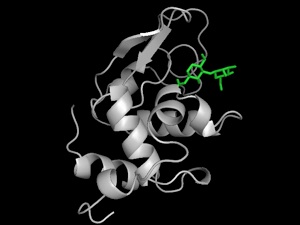
Modification of Viral Surfaces
Eukaryotic viruses are used for a variety of biomedical applications including gene therapy, oncolytic therapy and the production of live vaccines. All of these applications depend upon interactions at the viral surface. Traditionally, genetic fusions of coat proteins have been used to engineer the viral surface. However, these techniques can cause problems with viral assembly and can only introduce polypeptide sequences. As an alternative we plan to introduce chemical functionality onto the viral surface via metabolic engineering. Introduced functionality can be modified post assembly with not only polypeptides but also polymers and small molecules.


Bio-orthogonal Reaction Development
All of the research areas outlined above depend upon the ability of the introduced unnatural functionality to react specifically with an externally applied reagent. In the context of a physiological environment this is a challenging task. Current methods have limitations in terms of toxicity, speed and specificity. Our goal is to develop new techniques without these limitations. Our focus is on proximity accelerated electrocyclic reactions.


Protein Pharmaceutical Stabilization
Protein therapeutics demonstrate excellent specificity and efficacy. However, they are expensive and need to be taken often. This is partially the result of their instability within the body. Our focus is increasing the lifetime of these drugs within the body. Our approach involves the site-specific introduction of unnatural amino acids.
read more...

Tracking PTMs as a Function of Cell Physiology
Post-translational modifications (PTMs) are ubiquitous throughout biology and are thought to play a major role affecting protein function. However, the extent of these types of modifications is poorly understood and their impact even less so. Our focus in this area is the introduction of PTMs bearing a chemical tag. This tag will allow for the subsequent enrichment and characterization of proteins bearing this class of PTM. In this way, we hope to begin defining the role of different PTMs in various physiological processes.

